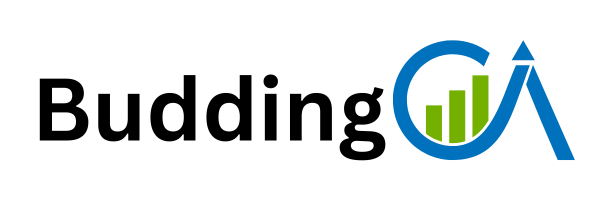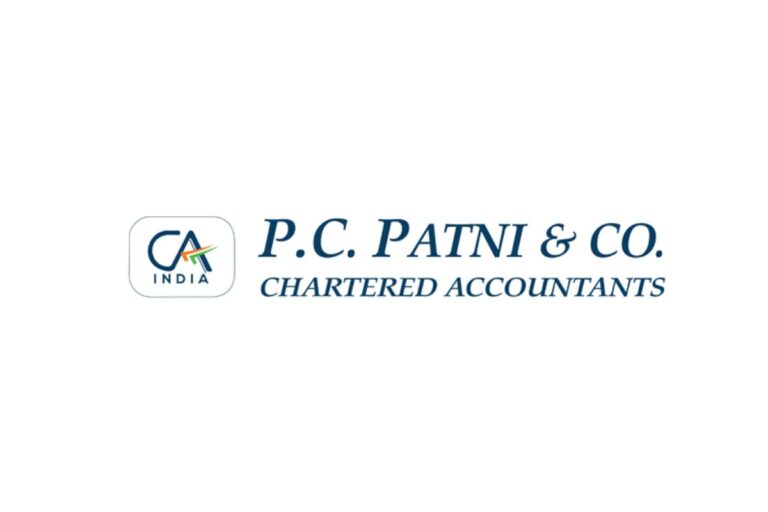As a Chartered Accountancy (CA) articleship trainee, preparing for your direct tax interview is a crucial step towards building your career. Direct tax forms the backbone of India’s taxation system and plays a significant role in the financial and regulatory framework. Employers expect you to have a sound knowledge of tax laws, practical insights, and the ability to apply concepts effectively.
This article provides a comprehensive overview of the most important direct tax questions you must be ready to answer during your CA articleship interviews. The aim is to equip you with clear explanations and practical understanding, so you can face interviews with confidence.
1. What Are the Slab Rates Under Old and New Tax Regimes?
Understanding tax slab rates is fundamental. India offers two tax regimes — the Old Tax Regime and the New Tax Regime (optional). Both have different rates and conditions.
Old Tax Regime Slab Rates (For Individuals Below 60 Years):
| Income Slab (₹) | Tax Rate |
|---|---|
| Up to 2,50,000 | Nil |
| 2,50,001 to 5,00,000 | 5% |
| 5,00,001 to 10,00,000 | 20% |
| Above 10,00,000 | 30% |
The old regime allows various exemptions and deductions under sections like 80C, 80D, HRA, etc.
New Tax Regime Slab Rates (Optional):
| Income Slab (₹) | Tax Rate |
|---|---|
| Up to 3,00,000 | Nil |
| 3,00,001 to 6,00,000 | 5% |
| 6,00,001 to 9,00,000 | 10% |
| 9,00,001 to 12,00,000 | 15% |
| 12,00,001 to 15,00,000 | 20% |
| Above 15,00,000 | 30% |
The new regime offers lower rates but disallows most exemptions and deductions.
2. What Are the Five Heads of Income?
Under the Income Tax Act, income is classified into five distinct heads. These categories help in proper assessment and taxation.
- Salaries: Includes wages, pension, gratuity, and all remuneration received from an employer.
- Income from House Property: Income earned from renting out property.
- Profits and Gains from Business or Profession (PGBP): Income from running a business or practising a profession.
- Capital Gains: Income from transfer/sale of capital assets like property, shares, etc.
- Income from Other Sources: Includes interest income, dividends, winnings from lotteries, etc.
Knowing these heads is essential because rules for computation, deductions, and tax rates vary for each.
3. How is the Residential Status of an Individual Determined?
Residential status affects tax liability in India. An individual’s tax liability depends on whether they are a Resident or Non-Resident in India during the financial year.
Conditions for Being a Resident:
- The individual is in India for 182 days or more during the year; OR
- The individual is in India for 60 days or more during the year and has been in India for 365 days or more in the preceding 4 years.
If these conditions are not met, the individual is treated as a Non-Resident.
Note: The residential status affects which income is taxable in India.
4. What is the Classification of Capital Gains?
Capital Gains are divided into:
- Long-Term Capital Gains (LTCG): If the holding period of the asset exceeds 36 months (or 12 months for equity shares and securities).
- Short-Term Capital Gains (STCG): If the holding period is less than the periods mentioned above.
The classification determines the applicable tax rates and available exemptions.
5. What Are the Tax Rates on Capital Gains?
Capital gains tax rates vary based on the nature of the asset and period of holding:
- LTCG:
- 20% with indexation benefits (for most assets except equity shares).
- 10% without indexation (applicable on LTCG from equity shares exceeding ₹1 lakh).
- STCG:
- Taxed as per slab rates for non-equity assets.
- 15% flat tax for listed securities (equity shares).
6. How is House Rent Allowance (HRA) Exemption Calculated?
HRA exemption is an important relief for salaried taxpayers. It is the least of the following three amounts:
- Actual HRA received.
- 50% of salary (basic + DA) for metro cities; 40% for non-metros.
- Rent paid minus 10% of salary.
Salary here includes basic salary, dearness allowance (if forming part of retirement benefits), and commission based on turnover.
7. What are Key Points Regarding Tax Deducted at Source (TDS)?
TDS is tax deducted at the time of payment by the payer to the recipient. Some common sections:
- Section 192: TDS on salary.
- Section 194A: TDS on interest income (10% if interest exceeds ₹40,000 for individuals, ₹50,000 for senior citizens).
- Section 194C, 194J, etc.: For payments to contractors, professionals, etc.
Each section prescribes rates and thresholds for TDS deduction.
8. What Are the Consequences of Non-Deduction of TDS?
If TDS is not deducted or deposited as per law, consequences include:
- Interest liability at 1% or 1.5% per month till payment.
- Disallowance of 30% of the related expense under Section 40(a)(ia).
- Penalty up to the amount of TDS not deducted or deposited.
Hence, compliance with TDS provisions is crucial.
9. What Are Sections 80TTA and 80TTB?
- Section 80TTA: Deduction up to ₹10,000 on interest income from savings bank accounts for individuals and Hindu Undivided Families (HUF).
- Section 80TTB: For senior citizens, deduction up to ₹50,000 on interest income from savings accounts, fixed deposits, and recurring deposits.
These deductions encourage savings and provide relief on interest income.
10. What Does Section 43B State?
Section 43B deals with allowability of deductions only on actual payment of certain expenses irrespective of the accounting method. Examples include:
- Tax, duty, cess, or fee.
- Employer’s contribution to provident fund.
- Interest on loans.
This means expenses accrued but unpaid cannot be claimed as deduction under this section.
11. How is Income from House Property Computed?
Income from house property is computed as follows:
- Calculate Gross Annual Value (GAV) (actual rent or reasonable expected rent).
- Deduct municipal taxes paid.
- Deduct 30% standard deduction on Net Annual Value.
- Deduct interest on housing loan (subject to limits).
The resulting amount is taxable under the head ‘Income from House Property’.
12. What is the Process of Set-Off of Losses?
Losses can be adjusted against income under certain rules:
- Intra-head set-off: Loss from one source can be set off against income from another source under the same head.
- Inter-head set-off: Certain losses, like house property loss, can be set off against income from other heads.
- Losses not set off can be carried forward for up to 8 years subject to conditions.
Understanding loss adjustment is important for tax planning.
13. Explain Section 40(b) Regarding Remuneration to Partners
Section 40(b) allows deduction of remuneration paid to partners in a partnership firm, but only up to limits prescribed based on:
- Book profit of the firm.
- Rate and amount limits under the Income Tax Rules.
Remuneration beyond these limits is disallowed.
14. What Are the Due Dates for Filing Income Tax Returns?
- For individuals and non-audit cases: 31st July following the financial year.
- For cases requiring audit (e.g., businesses exceeding prescribed turnover): 31st October.
- Late filing attracts penalties and interest.
Timely filing is essential to avoid consequences.
15. What Are the Due Dates for Payment of TDS?
- TDS deducted in a month must be deposited by the 7th day of the next month.
- For TDS deducted in March, the due date is 30th April.
Timely deposit of TDS avoids penalties.
16. What Are the Consequences of Non-Filing of Income Tax Return?
- Levy of late filing fees (up to ₹10,000).
- Interest on tax due under Sections 234A, 234B, and 234C.
- Loss of benefits like carry-forward of losses and certain deductions.
17. How is Agricultural Income Treated for Tax?
- Agricultural income is exempt from income tax.
- For tax rate calculation, agricultural income is aggregated with non-agricultural income to determine the applicable slab rate (known as partial integration).
- This may increase tax liability on non-agricultural income.
18. What is Advance Tax and Who Is Liable to Pay?
- Advance tax means paying estimated income tax in installments during the financial year.
- Individuals whose tax liability after TDS exceeds ₹10,000 are required to pay advance tax.
- It helps in spreading tax payments and avoiding interest penalties.
19. Discuss Tax Implications of Receiving a Gift
- Gifts from specified relatives are exempt.
- Gifts from non-relatives exceeding ₹50,000 in a financial year are taxable.
- Gift of immovable property is taxable if stamp duty value exceeds ₹50,000.
- Gifts received on occasion like marriage are exempt.
20. What is ‘Deemed to be Let Out’ Property?
- If a taxpayer owns more than two residential properties, the unoccupied ones are considered as ‘Deemed to be Let Out’.
- The potential rental income on such properties is taxable under Income from House Property.
21. How Are Dividends Taxed in the Hands of Recipient?
- Dividend income is fully taxable.
- TDS of 10% applies if dividend exceeds ₹5,000.
- Taxpayers can submit Form 15G/15H to avoid TDS if income is below taxable limits.
22. Can a Taxpayer Claim Deduction for Education Loan Interest Under Section 80E?
- Yes, interest paid on education loans for higher education of self, spouse, children, or wards is deductible.
- No limit on deduction amount, available for up to 8 years.
23. What is Section 54 Exemption in Capital Gains Tax?
- Provides exemption on capital gains arising from sale of a residential house.
- Gains must be reinvested in purchasing or constructing another residential property within prescribed timelines.
24. How Does the ‘Fair Market Value’ Concept Apply in Capital Asset Valuation?
- FMV is used to determine cost of acquisition where actual purchase price is not available (e.g., inheritance, gifts).
- It helps in calculating capital gains liability accurately.
25. Explain the ‘Clubbing of Income’ Provisions
- Income of spouse, minor child, or others may be clubbed with taxpayer’s income and taxed accordingly.
- Prevents tax avoidance by transferring income to family members.
Conclusion
Direct tax knowledge is fundamental for every CA articleship trainee. The above questions cover important concepts, practical computation, and compliance aspects that you will likely face in interviews. Preparing these thoroughly with examples and practical application will set you apart as a confident and competent candidate.
Focus on understanding not just the provisions but their real-world implications. This will help you not only clear interviews but also excel in your practical articleship work in taxation.
Calling all CA dreamers!
🔴 Are you tired of searching for the perfect articelship or job?
Well, fear no more! With ,10K+ students and professionals already on board, you don't want to be left behind. Be a part of the biggest community around! Join the most reliable and fastest-growing community out there! ❤️
And guess what? It’s FREE 🤑
✅ Join our WhatsApp Group (Click Here) and Telegram Channel (Click Here) today for instant updates.




